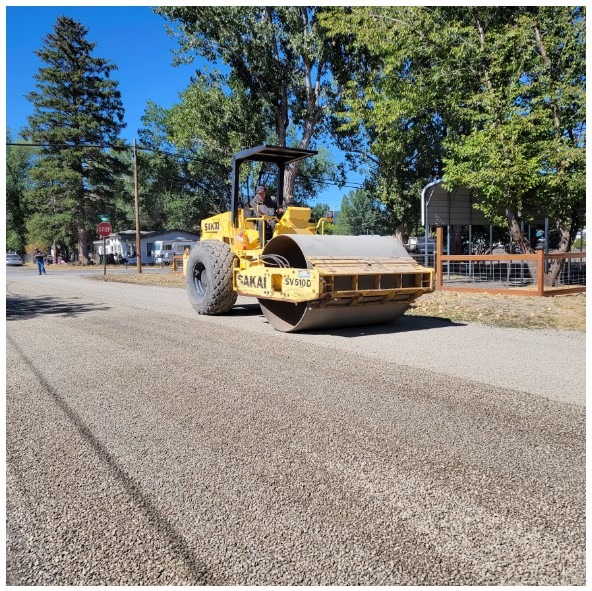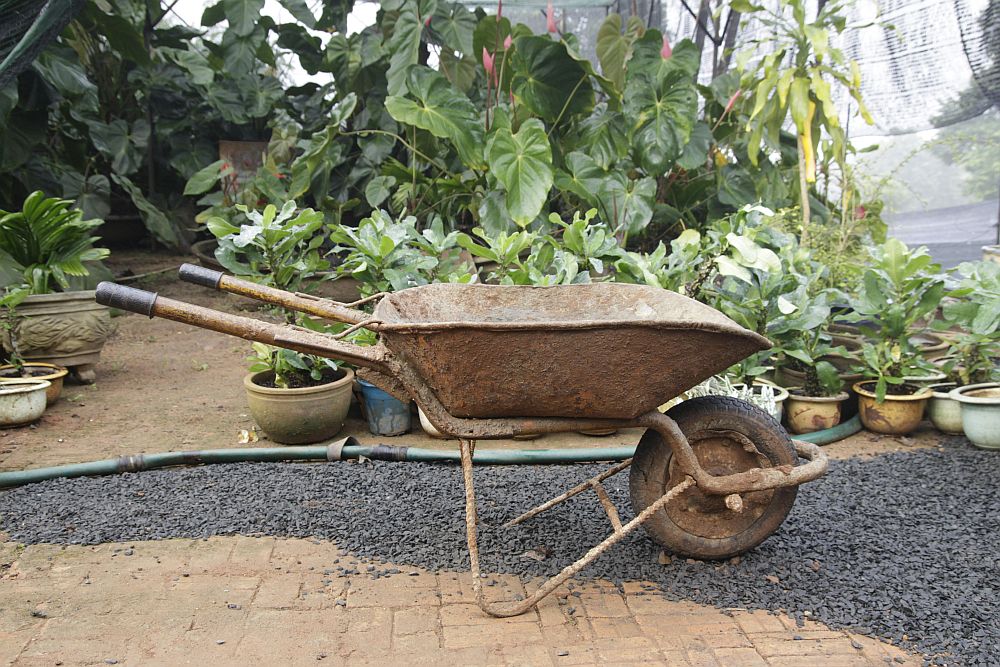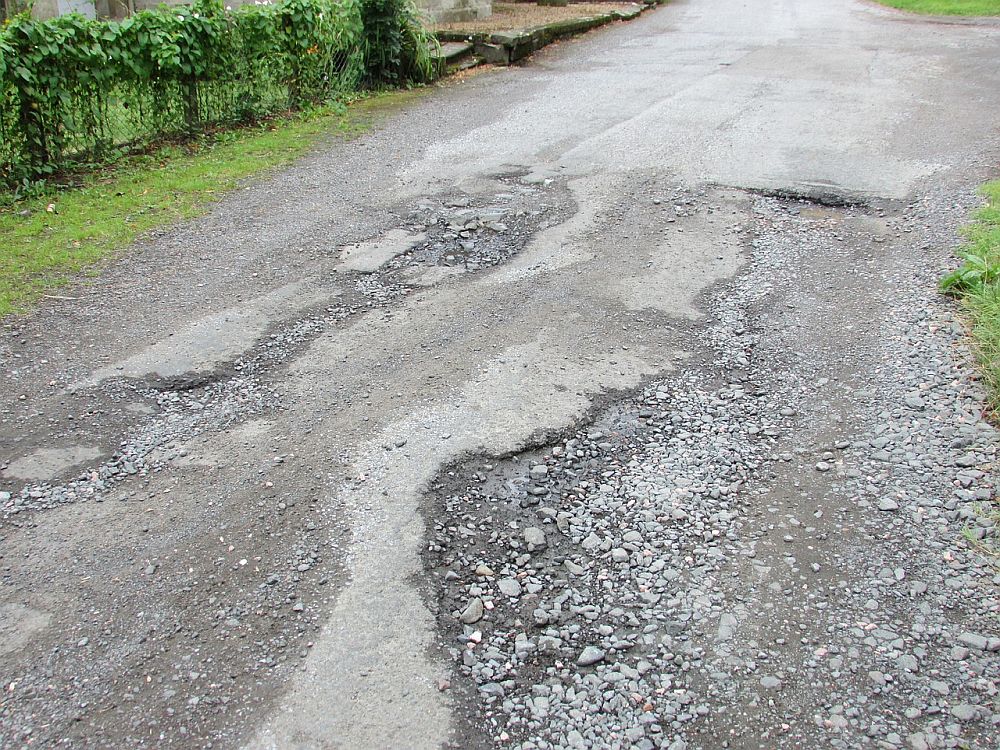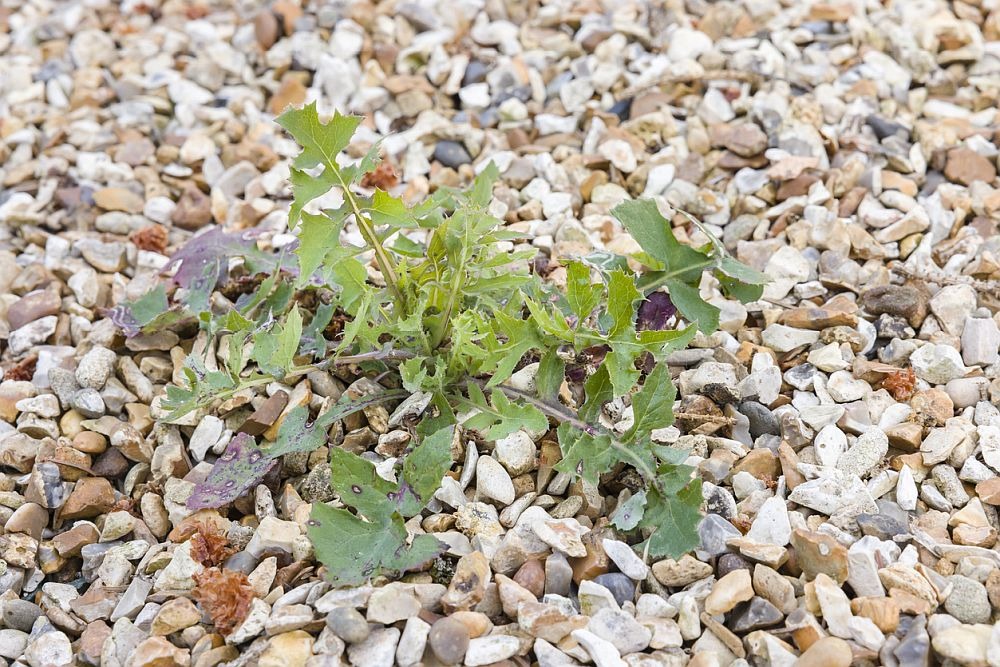A gravel driveway not only enhances the curb appeal of your home with its rustic charm but also provides a cost-effective, durable surface for your vehicles. However, to preserve its functionality and aesthetic appeal, a proactive approach to maintenance is essential. This comprehensive guide will navigate you through the critical maintenance tasks, from the significance of regular upkeep to the tools and methodologies necessary for tackling common maintenance challenges. By delving into strategies for filling potholes, mitigating weed proliferation, and ensuring efficient water drainage, we aim to equip you with the knowledge to maintain the integrity and beauty of your gravel driveway effectively.
What is a gravel driveway?
A gravel driveway is an unpaved road surface composed of loose stones, often sourced from natural quarries. These types of driveways are chosen for their cost-effectiveness, ease of installation, and excellent drainage capabilities. The customization options for gravel—ranging in size, color, and type—allow homeowners to tailor their driveway to complement their home’s landscape and architectural style seamlessly. To maintain its functionality and visual appeal, it is crucial to address common challenges such as potholes, weed growth, and uneven surfaces through regular maintenance.
Types of Gravel Used in Driveways
- Pea Gravel: Small, rounded stones that are easy to walk on, making it a popular choice for residential driveways. Its smooth texture, however, can lead to displacement and may require more frequent leveling.
- Crushed Stone: Angular pieces of rock that lock together better than round pebbles, providing a more stable surface. Crushed stone is effective in preventing the spread of weeds and is available in various sizes and colors.
- Quarry Process (QP): A mixture of stone dust and small crushed stone, QP compacts tightly to form a durable surface. It’s an excellent base layer for other types of gravel but requires topping up as the stones settle.
- Jersey Shore Gravel: Known for its golden color, this type of gravel is similar to pea gravel but with a more angular shape, providing better stability. It’s aesthetically pleasing and good for drainage.
- Marble Chips: White or light-colored marble chips can add a touch of elegance to a driveway. While they are aesthetically pleasing, they can be more expensive and may require more maintenance to keep them looking clean.
How the Choice of Gravel Affects Maintenance and Durability
The type of gravel you choose for your driveway affects both its maintenance needs and its durability. Smaller, rounder stones like pea gravel may shift more easily under tires, requiring regular raking and replenishment to maintain an even surface. Angular crushed stone and quarry process gravel offer more stability and require less frequent maintenance but may still need periodic topping up and leveling. Decorative options like marble chips can enhance the driveway’s appearance but might need more upkeep to maintain their pristine look.
Selecting the right type of gravel for your driveway involves balancing aesthetics, maintenance, and durability to suit your home’s style and your lifestyle. Understanding the characteristics of each type of gravel can help you make an informed decision that will keep your driveway looking great for years to come.
Why maintaining a gravel driveway is important?
Maintaining a gravel driveway is essential for several key reasons. Firstly, it helps to prevent potholes and uneven surfaces, which can pose hazards to both vehicles and pedestrians. Secondly, effective maintenance is crucial for controlling weed growth and maintaining the driveway’s appearance, ensuring it continues to enhance the home’s curb appeal. Lastly, ensuring proper maintenance supports efficient drainage, crucial in preventing water damage that could undermine the structural integrity of the driveway. By addressing these aspects through regular upkeep, homeowners can safeguard the longevity and functionality of their gravel driveway, thereby avoiding the need for costly repairs or replacements over time.
Consequences of Neglecting Maintenance
- Increased Repair Costs: Ignoring minor issues like small potholes or slight unevenness can lead to larger, more problematic areas that require extensive and costly repairs. Early intervention can prevent these issues from escalating, saving money in the long run.
- Safety Hazards: Potholes and uneven surfaces are not just unsightly; they pose significant safety risks. Vehicles can suffer damage from driving over these areas, and pedestrians are at risk of tripping and falling, potentially leading to injuries.
- Weed Overgrowth: Without regular maintenance, weeds can proliferate, pushing through the gravel and creating an unkempt appearance. Over time, these weeds can destabilize the gravel, leading to further maintenance challenges.
- Poor Drainage: Neglecting drainage maintenance can result in water pooling on the driveway’s surface or even diverting water towards your home, potentially causing foundation issues. Proper drainage is essential to prevent erosion and maintain the driveway’s structure.
- Decreased Property Value: A well-maintained gravel driveway enhances curb appeal and contributes to the overall value of your property. Conversely, a neglected driveway can detract from your home’s appearance and reduce its market value.
To prevent potholes and uneven surfaces
Regular upkeep is crucial to prevent potholes and uneven surfaces on a gravel driveway. These common issues can arise from the gradual displacement of gravel due to vehicular traffic and natural elements. By promptly leveling the surface and replenishing gravel, homeowners can ensure a consistently smooth and safe pathway for both vehicles and pedestrians.
To control weed growth and maintain appearance
Effective maintenance also plays a pivotal role in controlling weed growth, which is essential for preserving the driveway’s aesthetic appeal. Weeds not only detract from the appearance but can also destabilize the gravel over time. Employing landscape fabric and periodic herbicide treatments can keep the driveway looking pristine and prevent the encroachment of unwanted vegetation.
To ensure proper drainage and prevent water damage
Proper drainage is a cornerstone of gravel driveway maintenance, critical for preventing water accumulation that can lead to erosion and pothole formation. Without it, the driveway’s structural integrity could be compromised. Implementing graded surfaces for effective water runoff and incorporating drainage solutions like French drains ensures the longevity of the driveway by safeguarding against water damage.
How often should maintenance tasks be performed?
Gravel driveway maintenance should ideally be carried out seasonally and after heavy rains to preserve its condition and functionality. Engaging in seasonal maintenance, especially during the spring and fall, helps homeowners tackle any emerging issues such as potholes, uneven surfaces, or drainage concerns that may have developed due to seasonal weather changes. Furthermore, post-heavy rainfall inspections are crucial for identifying and rectifying any water-related damage or erosion promptly. This routine of regular checks and repairs ensures the driveway remains in optimal condition throughout the year, significantly reducing the likelihood of extensive and costly repairs.
Seasonal Maintenance Schedule
Below is a detailed maintenance schedule to ensure the longevity and appearance of a gravel driveway:
| Season | Maintenance Tasks |
|---|---|
| Spring | – Check for and fill potholes post-winter thaw. – Apply pre-emergent herbicide to prevent weed growth. – Inspect and clear drainage paths of debris. |
| Summer | – Regularly rake to level gravel and maintain even surface. – Apply post-emergent herbicide as needed to control weed growth. – Check for signs of erosion or water damage after heavy rains. |
| Fall | – Replenish gravel before winter to ensure adequate coverage. – Ensure proper drainage in preparation for winter weather. – Install or inspect landscape fabric for weed control effectiveness. |
| Winter | – Limit the use of de-icing chemicals to prevent gravel damage. – Conduct post-snowfall inspections to assess surface condition. – Plan for early spring maintenance activities. |
After Heavy Rains
- Inspect the driveway for any signs of erosion or new potholes that may have formed.
- Address any drainage issues immediately to prevent water from pooling and causing further damage.
- Level out any areas where gravel has been washed away or displaced.
This proactive approach to maintenance, guided by the detailed seasonal schedule, safeguards the driveway’s structural integrity and aesthetic quality year-round, ensuring it remains a functional and attractive aspect of your property.
What tools are needed for maintenance?
Maintaining a gravel driveway effectively requires a set of essential tools. Below is a detailed table listing the tools, their primary uses, and brief explanations of their importance in the maintenance process. Utilizing these tools regularly can greatly simplify the maintenance process, preserving both the functionality and aesthetic appeal of the driveway.
| Tool | Primary Use | Explanation |
|---|---|---|
| Rake | Leveling and spreading gravel | Indispensable for maintaining an even and smooth surface, effectively preventing the development of ruts and potholes. |
| Extra gravel | Filling and repairs | Essential for the immediate rectification of potholes, areas of thinning gravel, or other surface irregularities, thus preserving the driveway’s structural integrity. |
| Landscape fabric | Weed control | Acts as a preventative barrier beneath the gravel layer, inhibiting the growth of weeds through the gravel. |
| Tamper | Compacting gravel | Used to compact gravel in potholes or newly added layers, ensuring a firm and stable surface that resists displacement and erosion. |
| Weed torch | Organic weed control | Offers a chemical-free method of controlling weed growth by applying intense heat to the weed, causing it to wilt and die. |
| Wheelbarrow | Transporting gravel | Facilitates the movement of gravel to areas where it needs to be replenished or to potholes requiring filling. |
| Shovel | Moving and applying gravel | Essential for scooping and spreading gravel during the filling of potholes and the addition of new gravel layers. |
| Garden hose or watering can | Settling gravel | Used to lightly water down newly added gravel, helping to settle it into place and compact it before using a tamper. |
| Gloves | Hand protection | Protects hands from sharp edges of gravel and other potential hazards during manual work. |
Rake for leveling and spreading gravel
A rake serves as an indispensable tool for maintaining a gravel driveway, crucial for the leveling and spreading of gravel. This activity helps in maintaining an even and smooth surface, effectively preventing the development of ruts and potholes that can emerge from vehicle traffic and the natural settling of gravel.
Extra gravel for filling and repairs
Maintaining a stock of extra gravel is essential for prompt filling and repairs. This proactive measure allows for the immediate rectification of potholes, areas of thinning gravel, or other surface irregularities, thus preserving the driveway’s structural integrity and aesthetic appeal.
Landscape fabric for weed control
Utilizing landscape fabric is key in weed control, acting as a preventative barrier beneath the gravel layer. It inhibits the growth of weeds through the gravel, ensuring the driveway remains tidy and reducing the need for frequent maintenance.
This comprehensive toolkit, when employed effectively, can significantly enhance the maintenance process, ensuring your gravel driveway remains functional, stable, and visually appealing for years to come.
How to fill potholes in a gravel driveway?
Filling potholes in a gravel driveway is a critical maintenance task that begins with assessing the depth and size of the potholes. This assessment helps in determining the precise amount of gravel needed for the repair. It’s crucial to select the right type of gravel, ensuring it matches the existing driveway material for a consistent look and optimal functionality. Properly addressing potholes not only prevents further damage but also enhances the driveway’s overall appearance and ensures a smooth, safe passage for vehicles and pedestrians. Regular attention and prompt action are key to maintaining the durability and aesthetics of a gravel driveway.
Step-by-Step Guide to Filling Potholes
- Assess the Pothole: Determine the depth and width of the pothole. This will help you estimate the amount of gravel needed for the repair.
- Clean the Area: Remove any debris, loose stones, and dirt from the pothole. This ensures a solid base for the new gravel.
- Select the Right Type of Gravel: Choose gravel that matches your driveway’s existing material. For deeper potholes, consider using a mixture of larger stones for the base layer and finer gravel for the top layer.
- Fill the Pothole: Start by filling the pothole with larger stones if it’s deep, then add finer gravel until the pothole is filled to just above the level of the driveway.
- Compact the Gravel: Use a tamper or a piece of lumber to compact the gravel firmly into the pothole. This step is crucial for preventing the gravel from shifting and the pothole from re-forming.
- Level the Surface: Add or remove gravel as needed to ensure the repair is flush with the surrounding driveway surface. Use a rake for final leveling.
- Water the Repaired Area: Lightly watering the filled pothole can help settle the gravel and compact it further. Allow the area to dry.
- Check and Maintain: Monitor the repaired area over the next few days, especially after rainfall. Add more gravel and compact again if necessary.
Tips for Effective Compaction
- Use the Right Tools: A hand tamper is effective for small areas, but for larger potholes, consider renting a plate compactor for more uniform compaction.
- Layer Your Gravel: For deep repairs, fill in layers, compacting each layer before adding the next. This ensures a more stable repair.
- Consider a Binder: For high-traffic areas, mixing a gravel binder with your top layer of gravel can help keep the stones in place and extend the life of your repair.
Assessing the depth and size of potholes
The first step in repairing a gravel driveway is to assess the depth and size of potholes. This crucial evaluation helps determine the exact amount of gravel needed for effective repairs. An accurate assessment ensures that each pothole is adequately filled, laying the groundwork for a durable repair that addresses the problem at its core.
Filling potholes with the right type of gravel
Selecting the right type of gravel is pivotal when filling potholes. The gravel used should match the existing driveway’s material in size, texture, and color to ensure a seamless repair. Utilizing the appropriate gravel not only restores the driveway’s aesthetic appeal but also reinforces its structural integrity, preventing the recurrence of potholes and ensuring a smooth, even surface.
How to control weed growth?
Controlling weed growth in a gravel driveway is crucial for maintaining its aesthetic appeal and structural integrity. Implementing landscape fabric beneath the gravel serves as an effective physical barrier, significantly reducing the chances of weed penetration. Additionally, the strategic application of pre-emergent herbicide in early spring targets weed seeds before they have a chance to germinate. For those seeking eco-friendly options, alternative organic methods are also effective. These preventative measures, when employed together, form a comprehensive defense against weeds, ensuring the driveway remains neat and visually appealing.
Using landscape fabric under the gravel layer
Incorporating landscape fabric beneath the gravel layer serves as an effective strategy for weed control. This fabric creates a physical barrier that blocks weed growth, ensuring they cannot penetrate the surface, while still permitting water to drain through. It’s a vital measure for preserving both the visual appeal and structural integrity of the driveway with minimal upkeep.
Applying pre-emergent herbicide in early spring
The strategic application of pre-emergent herbicide during early spring acts as a preemptive strike against weeds. By targeting the seeds before they germinate, this approach drastically reduces the emergence of weeds throughout the season. This preventive action helps in maintaining a clean, attractive driveway, significantly cutting down on the need for labor-intensive weed removal later on.
Weed Control Options
Below is a detailed table listing both chemical and organic options for controlling weed growth in gravel driveways:
| Method | Type | Product/Approach | Application Tips | Environmental Consideration |
|---|---|---|---|---|
| Pre-emergent Herbicide | Chemical | Preen, Dimension, or Barricade | Apply in early spring before weed seeds germinate. Follow label instructions for dosage and safety. | Use with caution; follow local regulations regarding chemical use. |
| Post-emergent Herbicide | Chemical | Roundup, Glyphosate | Apply directly to visible weeds. Ideal for spot treatment. | Non-selective; will kill any plant it contacts. Use sparingly and responsibly. |
| Landscape Fabric | Physical Barrier | Commercial-grade landscape fabric | Install beneath the gravel layer to prevent weed growth. Overlap edges for full coverage. | Durable and long-lasting; reduces the need for chemical treatments. |
| Boiling Water | Organic | Hot water | Pour directly onto weeds. Effective for spot treatment. | Safe and eco-friendly; be cautious of potential burn hazards. |
| Vinegar Solution | Organic | Household vinegar (5% acetic acid) or horticultural vinegar (20% acetic acid) | Spray directly on weeds during sunny weather. May require multiple applications. | Non-toxic; higher concentrations of vinegar may affect soil pH. |
| Weed Torch | Organic | Propane weed torch | Apply flame directly to weeds, causing them to wilt and die. | Immediate results; use with caution to prevent fire hazards. |
By selecting the appropriate method based on your preferences and environmental considerations, you can effectively manage weed growth and maintain the beauty and integrity of your gravel driveway.
How to ensure proper drainage?
Ensuring proper drainage is essential to maintaining the integrity and longevity of a gravel driveway. Proper drainage prevents water accumulation that can lead to erosion, pothole formation, and potential structural damage to the driveway. By implementing effective drainage solutions, homeowners can significantly enhance the durability and functionality of their gravel driveway, ensuring it remains in optimal condition through various weather conditions.
Signs of Poor Drainage
- Water Pooling: After rainfall, water should drain away from the driveway. Standing water indicates poor drainage.
- Gravel Displacement: Water flow can displace gravel, creating uneven surfaces or revealing the underlying dirt.
- Erosion: Signs of erosion, such as channels or gullies, suggest that water is not being properly managed.
- Soggy Ground: The area around the driveway should not remain soggy or waterlogged after rain.
Grading the Driveway for Effective Water Runoff
Grading the driveway at a slight angle is crucial for facilitating effective water runoff. This approach ensures that water flows away from the driveway and surrounding areas, rather than pooling on the surface.
Steps for Proper Grading:
- Assess the Current Slope: Determine if the driveway currently has any slope and identify the direction of water flow.
- Plan the Grade: The driveway should have a minimum slope of 1% (1 inch of fall for every 100 inches of length) away from structures and toward an appropriate drainage area.
- Regrade as Needed: Use grading equipment, such as a box blade on a tractor, to adjust the slope. For minor adjustments, a heavy-duty landscape rake and manual labor may suffice.
Installing French Drains or Culverts
In areas susceptible to heavy rainfall or where water accumulation poses a risk, installing French drains or culverts becomes an essential consideration. These systems channel water efficiently away from the driveway, mitigating the risk of water damage.
French Drains:
- Trench Location: Dig a trench along the side of the driveway where water tends to accumulate.
- Trench Depth and Width: The trench should be approximately 12 to 18 inches wide and deep, sloping slightly toward the discharge point.
- Installation: Line the trench with landscape fabric, add a layer of crushed stone, place a perforated pipe in the trench, then cover with more crushed stone. Wrap the fabric over the top before backfilling with soil.
Culverts:
- Placement: Culverts are typically installed beneath the driveway at points where water needs to cross from one side to the other to prevent erosion and washouts.
- Size and Material: Choose a culvert size and material (plastic, metal) suitable for the expected water flow. Ensure it is large enough to handle heavy rains.
- Installation: Dig a trench across the driveway, ensuring it is slightly deeper than the diameter of the culvert. Place the culvert, then backfill and compact the soil above it. Gravel should be added last to match the level of the driveway.
By prioritizing proper drainage through careful grading and the installation of drainage solutions like French drains or culverts, homeowners can protect their gravel driveway from water-related issues. Regular inspections, especially after heavy rains, will help identify any emerging drainage problems early, allowing for timely interventions to maintain the driveway’s stability and appearance.
Tips for long-term gravel driveway care
Ensuring the longevity and appeal of a gravel driveway requires adherence to several maintenance tips. Regular inspection is paramount; it facilitates the early identification of potential issues such as potholes, emerging weeds, or inadequate drainage. This proactive measure allows for immediate repair of small issues, preventing them from escalating into more significant, costly problems. Moreover, the periodic task of replenishing gravel and regrading the driveway ensures its surface remains level, stable, and visually pleasing. By implementing these care tips, homeowners can maintain a durable, functional, and aesthetically appealing gravel driveway, thereby reducing the likelihood of extensive future repairs.
Regular inspection for early detection of issues
Regular inspections are essential in the proactive maintenance of a gravel driveway. These inspections help in the early detection of issues such as emerging potholes, weed proliferation, or drainage problems. Identifying these problems early allows for swift action, ensuring the driveway remains in optimal condition and preventing minor issues from developing into major repairs.
Immediate repair of small issues to prevent worsening
The principle of immediate repair of small issues is crucial to maintaining the integrity of a gravel driveway. Promptly addressing concerns like minor potholes, early signs of weed growth, or slight drainage blockages can prevent these issues from worsening. This approach not only helps in maintaining the driveway’s aesthetics but also contributes to its longevity and safety.
Replenishing gravel and regrading as needed
Replenishing gravel and regrading are vital practices for the sustained upkeep of a gravel driveway. Over time, gravel can become compacted, displaced, or worn, leading to uneven surfaces or exposed underlying layers. Adding fresh gravel and ensuring the driveway is properly graded not only restores its appearance but also enhances its structural stability and functionality, ensuring a smooth and durable surface.







